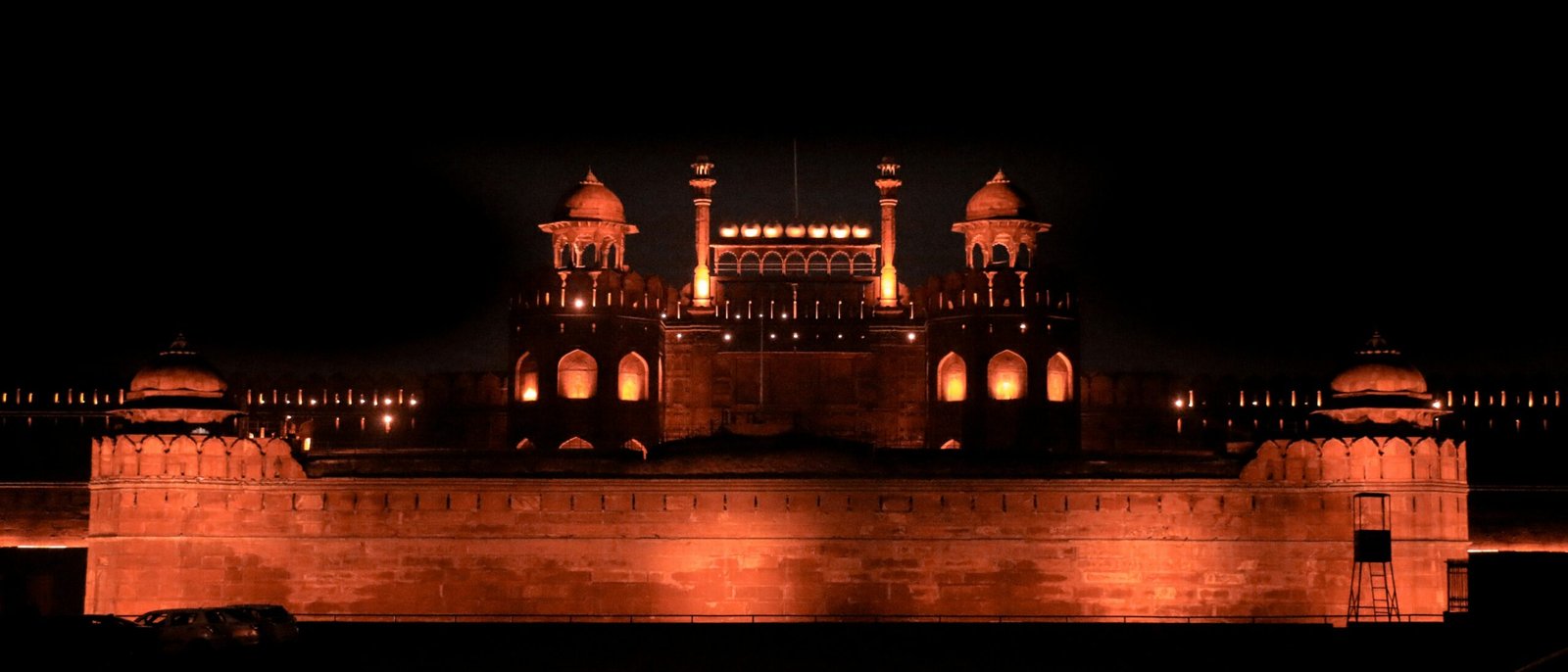The History of Lal Quila (Red Fort)
The Lal Quila, also known as the Red Fort, is a historic fortress located in the heart of Delhi, India. It holds immense significance in the country’s history and is a prominent landmark that attracts visitors from all over the world. Let’s delve into the rich history of this magnificent structure.
Construction and Architecture
The construction of the Red Fort began in 1638 under the orders of Mughal Emperor Shah Jahan. It took nearly a decade to complete and was designed by the architect Ustad Ahmad Lahauri. The fort is made of red sandstone, which gives it its distinctive appearance. The architecture of the fort is a blend of Persian, Timurid, and Indian styles, reflecting the grandeur and opulence of the Mughal era.
The fort is spread over an area of about 254 acres and is surrounded by high walls that stretch for more than two kilometers. It is a testament to the Mughal architectural brilliance, with intricate carvings, beautiful marble work, and stunning domes and minarets.
Historical Significance
The Red Fort has witnessed several significant events throughout history. It served as the main residence of the Mughal emperors for nearly 200 years and was the center of political power in India during that time. The fort was also the venue for the famous annual ceremony known as the “Peacock Throne,” where the emperor would address the public and display his wealth and power.
One of the most pivotal moments in Indian history associated with the Red Fort is the proclamation of independence by Jawaharlal Nehru, the first Prime Minister of India, on August 15, 1947. This marked the end of British colonial rule and the birth of an independent India. Since then, the Prime Minister of India hoists the national flag and delivers a speech from the ramparts of the Red Fort on every Independence Day.
Attractions within the Red Fort
The Red Fort is home to various structures and attractions that provide a glimpse into the grandeur of the Mughal era. Some of the notable attractions within the fort include:
- Diwan-i-Aam: This is the Hall of Public Audience, where the emperor would meet and address the general public.
- Diwan-i-Khas: Known as the Hall of Private Audience, this is where the emperor would hold private meetings with important dignitaries.
- Rang Mahal: The Rang Mahal, or the Palace of Colors, was the residence of the emperor’s wives and mistresses. It is known for its beautiful decorative work.
- Moti Masjid: The Pearl Mosque, built by Emperor Aurangzeb, is a stunning white marble mosque located within the fort complex.
Current Status and UNESCO World Heritage Site
The Red Fort is now a UNESCO World Heritage Site and is managed by the Archaeological Survey of India. It attracts millions of visitors each year who come to admire its architectural beauty and learn about its historical significance. The fort also serves as a venue for cultural events, including the annual Independence Day celebrations.
Visitors to the Red Fort can explore the various structures, walk through its gardens, and experience the grandeur of the Mughal era. The fort also houses museums that showcase artifacts and exhibits related to the history of the Mughal Empire.
Conclusion
The Lal Quila, or Red Fort, stands as a symbol of India’s rich history and cultural heritage. Its stunning architecture, historical significance, and grandeur make it a must-visit destination for anyone interested in exploring the Mughal era. A visit to the Red Fort is a journey back in time, offering a glimpse into the opulence and splendor of one of the greatest empires in history.
- GlucoRelief on Exploring Uttar Pradesh: A Dive into its Districts and List of Districts in Uttar Pradesh
- butik on Kylie Jenner Reveals Why She Dislikes Bella Hadid…
- Google Ads Agency Account on Kylie Jenner Reveals Why She Dislikes Bella Hadid…
- A2 Hosting VPS Hosting $2.99 a month on Kylie Jenner Reveals Why She Dislikes Bella Hadid…
- deniel on The Beginner’s Guide to Link Building and SEO
- Agriculture
- Article Submission Sites List
- Automotive
- Business
- Career
- Dating
- Digital Marketing
- Education
- Entertainment
- Environmental Issues
- Fashion
- Food
- Food & Cooking
- Global Updates
- Health
- Health and Wellness
- History
- Lifestyle
- Marketing
- Outdoor Activities
- Professional Development
- Religious
- Restaurant Marketing
- Science
- Social Media
- Spirituality
- Sports
- Technology
- Travel
- Uncategorized

